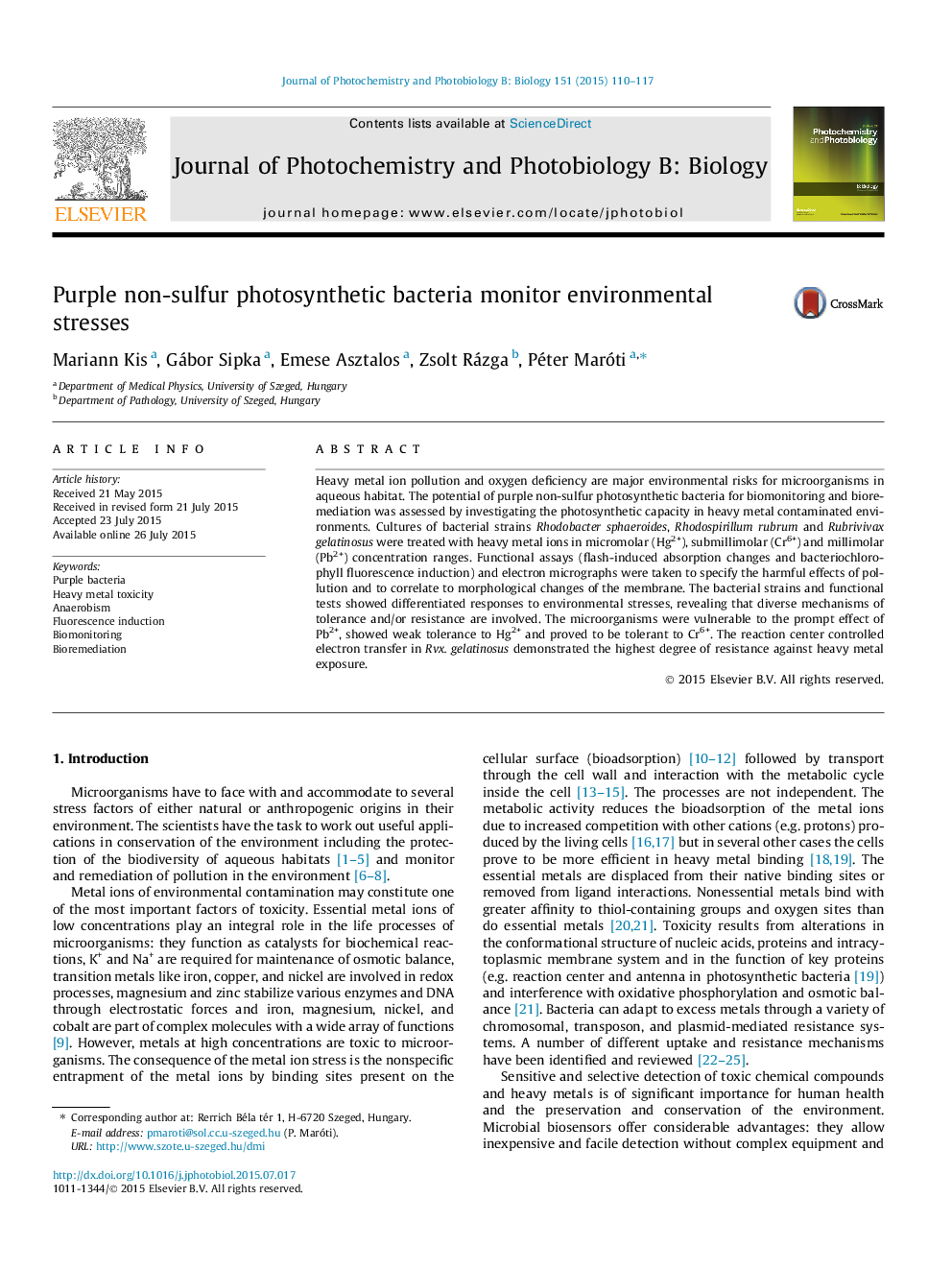| Article ID | Journal | Published Year | Pages | File Type |
|---|---|---|---|---|
| 30223 | Journal of Photochemistry and Photobiology B: Biology | 2015 | 8 Pages |
•Photosynthetic bacteria can monitor heavy metal contamination of the environments.•They are vulnerable to Pb2+, weakly tolerant to Hg2+ and highly tolerant to Cr6+.•Rubrivivax gelatinosus shows the highest resistance against heavy metal exposure.
Heavy metal ion pollution and oxygen deficiency are major environmental risks for microorganisms in aqueous habitat. The potential of purple non-sulfur photosynthetic bacteria for biomonitoring and bioremediation was assessed by investigating the photosynthetic capacity in heavy metal contaminated environments. Cultures of bacterial strains Rhodobacter sphaeroides, Rhodospirillum rubrum and Rubrivivax gelatinosus were treated with heavy metal ions in micromolar (Hg2+), submillimolar (Cr6+) and millimolar (Pb2+) concentration ranges. Functional assays (flash-induced absorption changes and bacteriochlorophyll fluorescence induction) and electron micrographs were taken to specify the harmful effects of pollution and to correlate to morphological changes of the membrane. The bacterial strains and functional tests showed differentiated responses to environmental stresses, revealing that diverse mechanisms of tolerance and/or resistance are involved. The microorganisms were vulnerable to the prompt effect of Pb2+, showed weak tolerance to Hg2+ and proved to be tolerant to Cr6+. The reaction center controlled electron transfer in Rvx. gelatinosus demonstrated the highest degree of resistance against heavy metal exposure.
